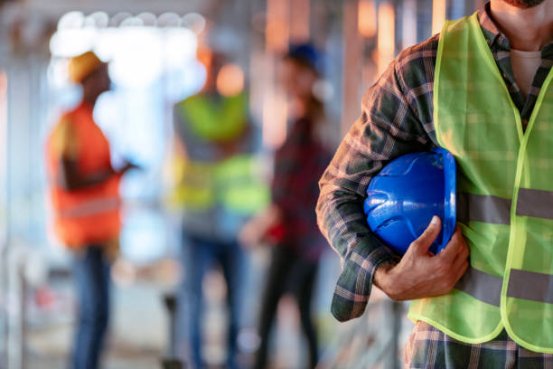Business
Securing Construction Sites: Examining Roles, Technologies, and Costs
Safeguarding construction sites requires a strategic mix of personnel, protocols, and evolving security technology. Costs fluctuate based on site complexity and size, but comprehensive security remains a non-negotiable priority across the sector.
Safeguarding construction sites requires a strategic mix of personnel, protocols, and evolving security technology. Costs fluctuate based on site complexity and size, but comprehensive security remains a non-negotiable priority across the sector.

Guardians of the Build: The Growing Importance of Construction Security Roles
As construction projects grow in ambition and complexity, the demand for professional site security continues to rise, playing a crucial role in protecting assets and maintaining safe working environments.
1. Closing the Construction Skills Gap
The UK is actively addressing labour shortages in construction through initiatives targeting the recruitment of 100,000 new workers annually. This strategy supports national infrastructure goals, including the delivery of 1.5 million homes.
2. Government Funding for Housing
To support growth, the government has committed £39 billion over the next decade to fund affordable and social housing. This investment highlights a focus on not just increasing supply, but ensuring housing accessibility for diverse populations.
3. Site Security as a Cornerstone
Effective site security—both physical and procedural—is essential to protecting equipment and personnel. Secure work environments are also critical in supporting recruitment and talent retention as the industry expands.
4. Expanding Industry, Expanding Security Needs
With the construction sector on track for rapid growth, the need for skilled professionals—including those in security roles—is increasing. These jobs are becoming central to successful and secure project execution.
Eyes in the Sky: Security Cameras Transforming Construction Monitoring
Modern surveillance systems are reshaping how construction sites are monitored, helping teams stay on schedule and avoid costly overruns.
1. Surveillance Becomes Essential
In today’s fast-paced UK construction scene, site monitoring has evolved from a luxury to a necessity. Companies are increasingly turning to advanced surveillance to mitigate risks, delays, and cost blowouts.
2. Market Drivers and Pressures
Urban expansion, strict safety regulations, and heightened client expectations are key drivers of the booming construction monitoring market. These systems help firms stay compliant while managing complex projects efficiently.
3. Smart Systems Beyond CCTV
Today’s monitoring platforms act as an operational hub, overseeing everything from materials management to workforce tracking. This shift enables enhanced visibility and faster decision-making.
4. AI in Surveillance
Artificial intelligence is revolutionising monitoring with advanced analytics that cut down on false alarms and enable real-time responses. The result: better site security and smoother project workflows.
5. Safeguarding Profitability and Compliance
Especially in regulated zones like London, contractors rely on integrated monitoring to ensure compliance, prevent theft, and keep operations efficient. The trend toward smarter systems is expected to continue well into 2033.
Beyond the Basics: The Rise of Advanced Security Systems
In 2025, the UK construction sector is adopting integrated and intelligent security tools that offer greater protection and operational benefits.
1. Secure by Design Regulations
New guidelines like “Secure by Design” now require integrated access controls from the earliest project phases. This ensures developments are equipped with mobile credentials and cloud-ready controllers from the outset.
2. Commercial Sector Leads Adoption
Commercial developments are leading in adopting advanced systems due to their complex occupancy and service needs. Scalable credential systems help manage these variables while addressing loss prevention and security concerns.
3. Healthcare's Need for Security
Driven by strict audit trails and safety needs, the healthcare sector is quickly implementing advanced access controls. These systems protect pharmaceutical environments and NHS properties while ensuring compliance.
4. Public Venues and Martyn’s Law
Compliance with Martyn’s Law is encouraging public venues to upgrade their access controls, ensuring higher levels of protection for both staff and visitors against potential threats.
Affordable Protection: Cost-Efficient Construction Security in 2025
Advanced construction security no longer comes with a prohibitive price tag. New technologies offer flexibility and affordability for projects of all sizes.
1. Customised Security Offerings
Smart security systems are now tailored to a range of budgets and project scales. Whether self-installed systems or full-service solutions, construction clients can find options that align with their risks and resources.
2. Modular and Scalable Services
Scalable packages allow businesses to expand or reduce their protection based on project phases—without compromising on rapid response or advanced tech capabilities.
3. Accessible Pricing Models
Fierce competition among providers has lowered prices across the board. Basic systems can start under £200, while larger integrated setups may go up to £675 before discounts—making quality security more accessible than ever.
4. Leading Service Providers
SimpliSafe is known for its strong overall performance, ADT for premium monitoring, and Abode for affordability. These providers offer tiered services to match diverse client needs and budgets.
5. Broadening Market Uptake
Wider use of promotions, affordable packages, and scalable models is making advanced security systems standard across construction sites. The shift reflects an increased recognition of the importance of proactive protection.
Q&A
Q1: What is the UK government’s plan for addressing construction labour shortages and housing targets?
A: The government seeks to recruit 100,000 new construction workers annually to support major housing goals, including building 1.5 million new homes over ten years.
Q2: How is the government financially supporting affordable housing development?
A: £39 billion is earmarked over ten years for affordable and social housing, aiming to broaden access and increase the total housing supply.
Q3: What factors are driving increased adoption of advanced security in construction?
A: Key influences include regulatory frameworks like "Secure by Design," the need to protect high-value assets, stricter safety standards, and compliance with Martyn’s Law.
Q4: What affordable security options exist for UK construction firms in 2025?
A: Solutions range from sub-£200 DIY systems to £675 comprehensive kits. Competitive pricing, promotions, and flexible packages help firms secure their sites cost-effectively.
Q5: What challenges exist in integrating AI and other new technologies into construction security roles?
A: Cultural resistance, complex integration into critical infrastructure, and strict data sovereignty rules pose challenges—alongside new cybersecurity risks from blending IT and OT systems.
References
https://www.salary.com/research/salary/alternate/construction-site-safety-manager-salary
https://www.belfrysoftware.com/blog/security-guard-salary
https://www.payscale.com/research/US/Job=Security_Engineer/Salary
https://www.salary.com/research/salary/benchmark/security-guard-unarmed-salary
https://www.indeed.com/career/security-guard/salaries



